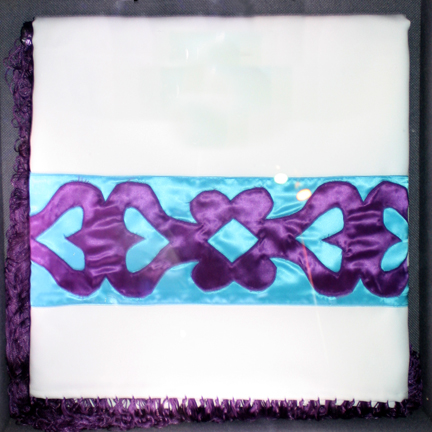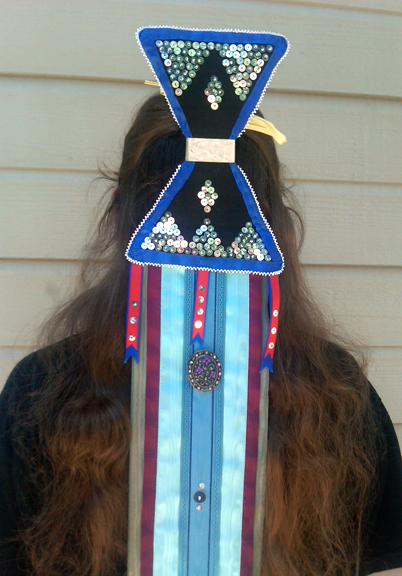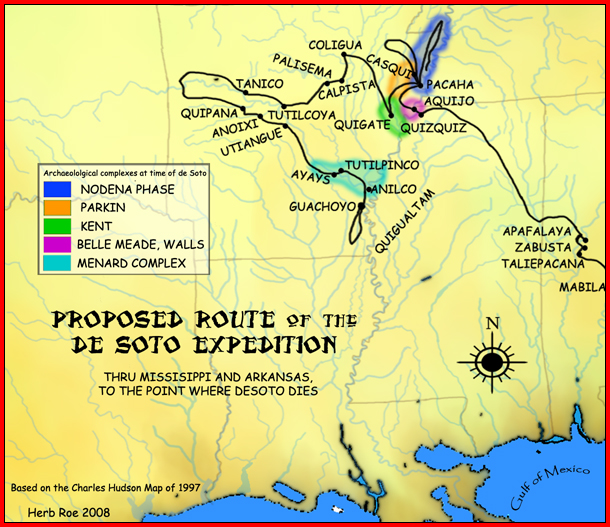|
Ribbon Work
Ribbon work is an appliqué technique for clothing and dance regalia among Prairie and Great Lakes Native American tribes. Deb Haaland wore a ribbon skirt made by Agnes Woodward for her 2021 swearing in ceremony as US Interior Secretary. History Silk ribbons, brought to North America by European traders, inspired a new, uniquely Native American art form. Mi'kmaq people created ribbon appliqué as early as 1611. In 1789 the regime of the French Revolution decreed that clothing should be plain, so silk ribbons fell out of fashion in France and were exported to North America. Those tribes who traded furs with the French are most known for their ribbon work, such as the Kickapoo, Mesquakie, Miami, Odawa, Ojibwa, Osage, Otoe-Missouria, Potawatomi, and Quapaw, but the practice has spread to many other tribes. Initially, layers of ribbons were sewn on the edges of cloth, replacing painted lines on hide clothing and blankets.Berlo, Janet C. and Ruth B. Phillips. ''Native North Am ... [...More Info...] [...Related Items...] OR: [Wikipedia] [Google] [Baidu] |
Ribbonwork Shawl Josephine Parker
Ribbon work is an appliqué technique for clothing and dance regalia among Prairie and Great Lakes Native American tribes. Deb Haaland wore a ribbon skirt made by Agnes Woodward for her 2021 swearing in ceremony as US Interior Secretary. History Silk ribbons, brought to North America by European traders, inspired a new, uniquely Native American art form. Mi'kmaq people created ribbon appliqué as early as 1611. In 1789 the regime of the French Revolution decreed that clothing should be plain, so silk ribbons fell out of fashion in France and were exported to North America. Those tribes who traded furs with the French are most known for their ribbon work, such as the Kickapoo, Mesquakie, Miami, Odawa, Ojibwa, Osage, Otoe-Missouria, Potawatomi, and Quapaw The Quapaw ( ; or Arkansas and Ugahxpa) people are a tribe of Native Americans that coalesced in what is known as the Midwest and Ohio Valley of the present-day United States. The Dhegiha Siouan-speaking tribe histori ... [...More Info...] [...Related Items...] OR: [Wikipedia] [Google] [Baidu] |
Osage Nation
The Osage Nation ( ) ( Osage: 𐓁𐒻 𐓂𐒼𐒰𐓇𐒼𐒰͘ ('), "People of the Middle Waters") is a Midwestern Native American tribe of the Great Plains. The tribe developed in the Ohio and Mississippi river valleys around 700 BC along with other groups of its language family. They migrated west after the 17th century, settling near the confluence of the Missouri and Mississippi rivers, as a result of Iroquois invading the Ohio Valley in a search for new hunting grounds. The term "Osage" is a French version of the tribe's name, which can be roughly translated as "calm water". The Osage people refer to themselves in their indigenous Dhegihan Siouan language as 𐓏𐒰𐓓𐒰𐓓𐒷 ('), or "Mid-waters". By the early 19th century, the Osage had become the dominant power in the region, feared by neighboring tribes. The tribe controlled the area between the Missouri and Red rivers, the Ozarks to the east and the foothills of the Wichita Mountains to the south. They d ... [...More Info...] [...Related Items...] OR: [Wikipedia] [Google] [Baidu] |
Indigenous Culture Of The Northeastern Woodlands
*
*
{{disambiguation ...
Indigenous may refer to: *Indigenous peoples *Indigenous (ecology), presence in a region as the result of only natural processes, with no human intervention * Indigenous (band), an American blues-rock band * Indigenous (horse), a Hong Kong racehorse * ''Indigenous'' (film), Australian, 2016 See also * Disappeared indigenous women *Indigenous Australians * Indigenous language * Indigenous religion * Indigenous peoples in Canada *Native (other) Native may refer to: People * Jus soli, citizenship by right of birth * Indigenous peoples, peoples with a set of specific rights based on their historical ties to a particular territory ** Native Americans (other) In arts and enterta ... [...More Info...] [...Related Items...] OR: [Wikipedia] [Google] [Baidu] |
Indigenous Culture Of The Great Plains
*
*
{{disambiguation ...
Indigenous may refer to: *Indigenous peoples *Indigenous (ecology), presence in a region as the result of only natural processes, with no human intervention *Indigenous (band), an American blues-rock band *Indigenous (horse), a Hong Kong racehorse * ''Indigenous'' (film), Australian, 2016 See also *Disappeared indigenous women *Indigenous Australians *Indigenous language *Indigenous religion *Indigenous peoples in Canada *Native (other) Native may refer to: People * Jus soli, citizenship by right of birth * Indigenous peoples, peoples with a set of specific rights based on their historical ties to a particular territory ** Native Americans (other) In arts and enterta ... [...More Info...] [...Related Items...] OR: [Wikipedia] [Google] [Baidu] |
Great Lakes Tribal Culture
Great may refer to: Descriptions or measurements * Great, a relative measurement in physical space, see Size * Greatness, being divine, majestic, superior, majestic, or transcendent People * List of people known as "the Great" *Artel Great (born 1981), American actor Other uses * ''Great'' (1975 film), a British animated short about Isambard Kingdom Brunel * ''Great'' (2013 film), a German short film * Great (supermarket), a supermarket in Hong Kong * GReAT, Graph Rewriting and Transformation, a Model Transformation Language * Gang Resistance Education and Training Gang Resistance Education And Training, abbreviated G.R.E.A.T., provides a school-based, police officer instructed program that includes classroom instruction and various learning activities. Their intention is to teach the students to avoid gan ..., or GREAT, a school-based and police officer-instructed program * Global Research and Analysis Team (GReAT), a cybersecurity team at Kaspersky Lab *'' Great!'', a 20 ... [...More Info...] [...Related Items...] OR: [Wikipedia] [Google] [Baidu] |
Dush-toh
A dush-toh, also spelled dush-too, dush-tooh, or dush-tuh, is a customary Caddo hair ornament worn by girls and women during dances, particularly the Turkey Dance."Summer Youth Camp." ''Caddo Nation: Heritage and Culture''. (retrieved 3 Feb 2010) Neighboring tribes, such as the Kickapoo and Delaware, have similar women's hair ornaments. A dush-toh consists of an embellished, butterfly- or hourglass-shaped frame that is worn on the back of the head with ribbons that flow down the back, almost to the ground. They were made in the 19th and 20th centuries,Ellison 11 as well as into the present. Frame The top of the butterfly-shaped frame is typically 4.25 inches wide and the bottom is usually 4-5/8 inches wide. The frame is 7.5 inches tall. The frame can be covered in black felt and edged ...[...More Info...] [...Related Items...] OR: [Wikipedia] [Google] [Baidu] |
Powwow
A powwow (also pow wow or pow-wow) is a gathering with dances held by many Native American and First Nations communities. Powwows today allow Indigenous people to socialize, dance, sing, and honor their cultures. Powwows may be private or public, indoors or outdoors. Dancing events can be competitive with monetary prizes. Powwows vary in length from single-day to weeklong events. In mainstream American culture, such as 20th-century Western movies or by military personnel, the term ''powwow'' has been used to refer to any type of meeting. This usage has been considered both offensive and falling under cultural misappropriation. History The word ''powwow'' is derived from the Narragansett word ''powwaw'', meaning "spiritual leader". The term itself has variants including ''Powaw'', ''Pawaw'', ''Powah, Pauwau'' and ''Pawau''. A number of tribes claim to have held the "first" pow wow. Initially, public dances that most resemble what are now known as pow wows were most commo ... [...More Info...] [...Related Items...] OR: [Wikipedia] [Google] [Baidu] |
Ardina Moore Ribbonwork
Ardina is a fictional character appearing in American comic books published by Marvel Comics. Fictional character biography The Defenders were told by Papa Hagg that they needed female analogs to counter The Order, and they found analogs of all the Order except for the Silver Surfer. Papa Hagg gave them a magic dagger to siphon off some of the Silver Surfer's energy and create a female by using a spell invoking Umar, Hecate, Demeter, Jord, and Apalla. Once Ardina was created, she and the rest of the Defenders were banished to a far off place. The Defenders were rescued from this strange place by Dr. Christopher Ganyrog and Romantic Objective Pamela. The Defenders then learned that they were on the planet Yann and that Yandroth was manipulating the Order. When many of the Earth's heroes attacked the Order, the Defenders and warriors of Yann helped the heroes. Yandroth's manipulations were revealed and the Order broke away from his influence and defeated him. The people of Yann to ... [...More Info...] [...Related Items...] OR: [Wikipedia] [Google] [Baidu] |
Quapaw
The Quapaw ( ; or Arkansas and Ugahxpa) people are a tribe of Native Americans that coalesced in what is known as the Midwest and Ohio Valley of the present-day United States. The Dhegiha Siouan-speaking tribe historically migrated from the Ohio Valley area to the west side of the Mississippi River in what is now the state of Arkansas; their name for themselves (or autonym) refers to this migration and to traveling downriver. The Quapaw are federally recognized as the Quapaw Nation. The US federal government forcibly removed them to Indian Territory in 1834, and their tribal base has been in present-day Ottawa County in northeastern Oklahoma. The number of members enrolled in the tribe was 3,240 in 2011. Name Algonquian-speaking people called the Quapaw ''akansa''. French explorers and colonists learned this term from Algonquians and adapted it in French as ''Arcansas''. The French named the Arkansas River and the territory of Arkansas for them. Government The Quapaw Nat ... [...More Info...] [...Related Items...] OR: [Wikipedia] [Google] [Baidu] |
Potawatomi
The Potawatomi , also spelled Pottawatomi and Pottawatomie (among many variations), are a Native American people of the western Great Lakes region, upper Mississippi River and Great Plains. They traditionally speak the Potawatomi language, a member of the Algonquin family. The Potawatomi call themselves ''Neshnabé'', a cognate of the word ''Anishinaabe''. The Potawatomi are part of a long-term alliance, called the Council of Three Fires, with the Ojibway and Odawa (Ottawa). In the Council of Three Fires, the Potawatomi are considered the "youngest brother" and are referred to in this context as ''Bodwéwadmi'', a name that means "keepers of the fire" and refers to the council fire of three peoples. In the 18th century, they were pushed to the west by European/American encroachment and eventually removed from their lands in the Great Lakes region to reservations in Oklahoma. Under Indian Removal, they eventually ceded many of their lands, and most of the Potawatomi relocate ... [...More Info...] [...Related Items...] OR: [Wikipedia] [Google] [Baidu] |
Ojibwa
The Ojibwe, Ojibwa, Chippewa, or Saulteaux are an Anishinaabe people in what is currently southern Canada, the northern Midwestern United States, and Northern Plains. According to the U.S. census, in the United States Ojibwe people are one of the largest tribal populations among Native American peoples. In Canada, they are the second-largest First Nations population, surpassed only by the Cree. They are one of the most numerous Indigenous Peoples north of the Rio Grande. The Ojibwe population is approximately 320,000 people, with 170,742 living in the United States , and approximately 160,000 living in Canada. In the United States, there are 77,940 mainline Ojibwe; 76,760 Saulteaux; and 8,770 Mississauga, organized in 125 bands. In Canada, they live from western Quebec to eastern British Columbia. The Ojibwe language is Anishinaabemowin, a branch of the Algonquian language family. They are part of the Council of Three Fires (which also include the Odawa and Potawatomi) and ... [...More Info...] [...Related Items...] OR: [Wikipedia] [Google] [Baidu] |







